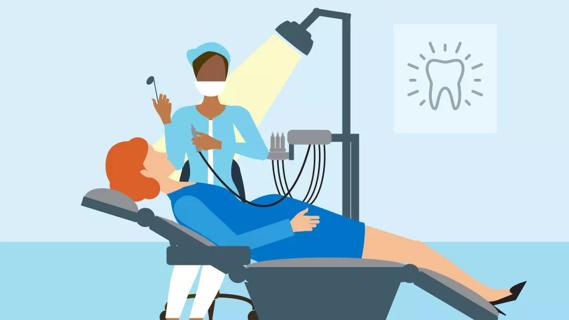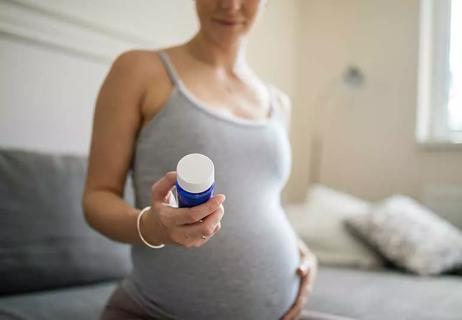There’s only one proven way to stack the deck in favor of a boy or a girl

From diet changes to the timing of intercourse, several suggested practices promise to ensure you the ability to choose the sex of your baby. But are they too good to be true?
Advertisement
Cleveland Clinic is a non-profit academic medical center. Advertising on our site helps support our mission. We do not endorse non-Cleveland Clinic products or services. Policy
In a word, yes.
“The odds of having a baby of either sex remain fairly even at 50/50,” says urologist Sarah Vij, MD. She explains what drives some of these theories and sheds light on the truth.
“Your baby’s genetic sex is determined at conception, when the sperm fertilizes the egg,” Dr. Vij explains.
But first, it’s important to understand a few things about sex and gender — namely, that they’re not the same thing.
Advertisement
Here’s where it can get confusing: At birth, the terms “boy” and “girl” refer to a baby’s chromosomes, anatomy and reproductive organs. But as they grow up, the same words are used to signify gender. Though we can know a baby’s sex when they’re born, we can’t know their gender until they get older and can identify it for themselves.
So, when someone says that a baby is a boy or a girl (in this article and throughout life), that just means they were assigned male or female at birth.
Sperm is the deciding factor in a baby’s genetic sex. It all has to do with chromosomes, which are the microscopic, thread-shaped strands inside your cells that make you who you are — including your eye color, your blood type and, yes, your genetic sex.
“At conception, the genetically female parent contributes an X chromosome, and the genetically male parent contributes either an X or a Y chromosome,” Dr. Vij explains. “Babies with an XX chromosome are assigned female at birth, while babies with an XY chromosome are assigned male at birth.”
In the 1960s, an American Ob/Gyn named Landrum Shettles, MD, developed theories about genetic sex that became known as the Shettles Method. They’ve since been debunked by science, but many of these beliefs still persist.
At the crux of Dr. Shettles’ theories was his belief that sperm carrying the Y chromosome (which conceives of male XY chromosomes) is lighter and faster but less durable than the sperm carrying the X chromosome (which results in female XX chromosomes).
This has led to several widespread myths about conception.
Dr. Shettles believed that having intercourse closer to ovulation would allow the lighter, faster Y-chromosome sperm to reach the egg first. He also suggested that having deeper intercourse would help the faster Y-chromosome sperms get to the egg first.
To conceive a boy, he advised couples to:
Dr. Shettles believed that having intercourse farther from the date of ovulation would enable the stronger, more durable X-chromosome sperm to outlast the Y-chromosome sperm.
He said that couples who wanted to have a girl should:
Advertisement
Here’s the problem: Science doesn’t support Dr. Shettles’ theories.
For starters, research has disproven the idea that sperm carrying the X chromosome is structurally different from sperm carrying the Y chromosome, which debunks many of Shettles’ theories right off the bat.
And what about his theories about when to have sex?
“Intercourse one to two days prior to ovulation is good timing,” Dr. Vij notes, “but this only increases the likelihood of conception, not what sex your baby will be.”
Your ovulation window is short, leaving you only about 12 hours to conceive. But because sperm can survive inside the female reproductive tract for 72 hours, doctors recommend having sex in the three day-span before ovulation. This will increase your chances of getting pregnant — but that’s all it will do. Studies continue to show that the timing of conception doesn’t play any role in your child’s sex.
Sex position doesn’t make a difference in how fast sperm reaches the cervix either. “Having deeper intercourse won’t alter the delivery of sperm to the egg at all,” Dr. Vij clarifies.
Dr. Shettles also had a lot of theories about the pH factor of the vagina — specifically, he believed that “cleaning” the vagina with different substances (known as douching), would change the vagina’s pH in a way that would lead to conceiving either a boy or a girl.
Advertisement
Using a vinegar douche, he said, would make the vagina more acidic and help conceive a girl, while douching with baking soda and water would make the vagina more alkaline, leading to a boy.
But again, this is false — and potentially harmful.
“Douching won’t change odds for either particular sex,” Dr. Vij states. “Importantly, it can also be very harmful to the vagina, so these techniques definitely aren’t recommended.”
There are two more pervasive beliefs about how to conceive a baby of a specific sex — and neither has any scientific merit:
If you’re sensing a theme here, you’re onto something: There are plenty of myths about how to conceive a boy or a girl, but they’ve all been disproven as reliable methods.
Advertisement
Without medical intervention, there’s just no way to stack the deck in favor of having a boy or a girl.
Currently, the only way to guarantee your baby’s sex is a technique called preimplantation genetic diagnosis (PGD), where a single sperm is implanted into the egg in a type of in vitro fertilization called intracytoplasmic sperm injection (ICSI). Before a developing embryo is implanted into your uterus, one of its cells is tested to determine sex.
Still, Dr. Vij says that instead of trying for a baby of a particular sex, it’s best to focus on something you can have much more control over — taking care of yourself during your pregnancy so both you and your baby, whatever their sex, are as healthy as possible.
Learn more about our editorial process.
Advertisement

Talk with them about their new sibling early and often

Dental care is not only safe during pregnancy, but it’s also highly recommended

A healthy pregnancy diet includes good amounts of folic acid, DHA, calcium and more

Always talk with your doctor for advice, too

Healthcare providers recommend waiting until week 13 to dye your hair, just to be safe

Having a baby after a loss can bring unexpected emotions

Your second-trimester is usually the best time to travel

Yes! Get a flu shot as soon as it’s available

Type 2 diabetes isn’t inevitable with these dietary changes

Applying a hot or cold compress can help with pain